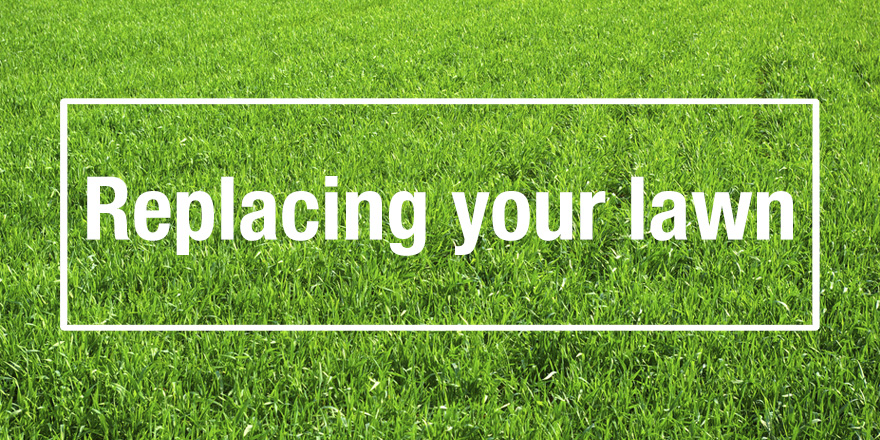Replacing your lawn

During peak usage times over summer your lawn can come under a lot of stress. Factors like a lack of moisture and too much shade can also hurt your lawn, and you may end up feeling like it's time to take action.
Replacing your lawn with mulch or new turf can seem like a big project, and you're certainly going to create some mess. A MEGABAG will help you keep the old turf under control and out of the way until we come to collect it.
You can use hard wearing or shade friendly turf to make sure your new lawn lasts longer and stays looking better.
When should you replace a lawn?
As with any DIY project, preparation and timing are key. Whether you want to create a new lawn from scratch or improve an existing area, you'll need to pick the right time of year. Turf is best laid during spring or autumn, when little mowing is required and the ground is not too wet or frosty.
You'll need to make sure that your turf is placed on warm, moist soil if you want the introduction to go smoothly. Frequent watering is the key to preventing your new grass coming under too much stress.
What will you need
- A fine rake
- A fork
- Top soil
- A straight edged board
- A MEGABAG for waste
- A hosepipe/watering can
- A cutting blade

How do I buy turf and how much do I need?
Before heading out to buy your new turf, measure out the area you're going to fill. Turf is commonly sold in rolls of 1 square metre and these are typically 610mm x 1640mm.
Make sure you get freshly cut and newly delivered turf. You can find a local grower using the Turfgrass Growers Association's tool.
Not all turf is created equal - you can get several grades which suit different purposes. Domestic turf contains dwarf perennial ryegrass and is very hard wearing, while fine turf, contains grasses such as bentgrass and fescues and is better for a showpiece landscaping project.
In areas of high shade you may want to choose shade loving turf such as those containing a high percentage of fine-leaved grasses, among them creeping red fescue and smooth-stalked meadow grass.
You'll want to get your turf laid within a day of having it delivered, but if you can't put it down immediately, store your turf out of the sun and sprinkle water on it. If your waiting more than a couple of hours to lay your turf, roll it out and water it thoroughly. If the grass goes a bit yellow while you're waiting try not to worry - it should green back up once laid and fed.
How do I lay turf
Before heading out to buy your new turf, measure out the area you're going to fill. Turf is commonly sold in rolls of 1 square metre, and these are typically 610mm x 1640mm.
Make sure you get freshly cut and newly delivered turf. You can find a local grower using the Turfgrass Growers Association's tool.
Not all turf is created equal - you can get several grades which suit different purposes. Domestic turf contains dwarf perennial ryegrass, and is very hard wearing, while fine turf, contains grasses such as bents and fescues and is better for a showpiece landscaping project.
In areas of high shade you may want to choose shade loving turf such as those containing a high percentage of fine-leafed grasses, among them creeping red fescue and smooth-stalked meadow grass.
You'll want to get your turf laid within a day of having it delivered, but if you can't put it down immediately, store your turf out of the sun and sprinkle water on it. If you’re waiting more than a couple of hours to lay your turf, roll it out and water it thoroughly. If the grass goes a bit yellow while you're waiting try not to worry - it should green back up once laid and fed.

How do I look after turf once it is laid?
- Plenty of watering
- Stay off the grass for the first few weeks until the turf has rooted in to the soil
- Trim lightly with mower blades set high
If you need more tips on lawns and maintenance, check out the RHS page.

